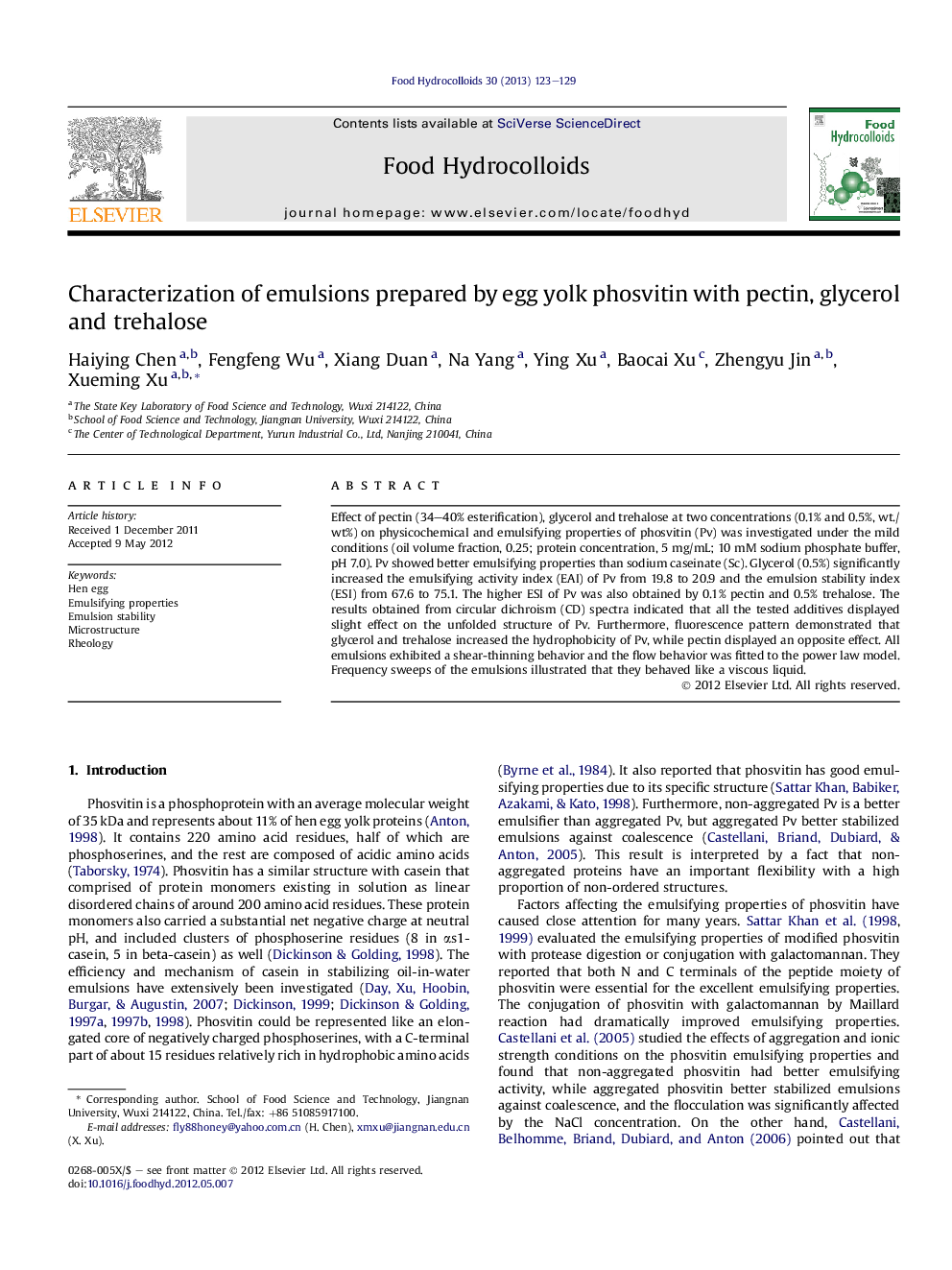| Article ID | Journal | Published Year | Pages | File Type |
|---|---|---|---|---|
| 604732 | Food Hydrocolloids | 2013 | 7 Pages |
Effect of pectin (34–40% esterification), glycerol and trehalose at two concentrations (0.1% and 0.5%, wt./wt%) on physicochemical and emulsifying properties of phosvitin (Pv) was investigated under the mild conditions (oil volume fraction, 0.25; protein concentration, 5 mg/mL; 10 mM sodium phosphate buffer, pH 7.0). Pv showed better emulsifying properties than sodium caseinate (Sc). Glycerol (0.5%) significantly increased the emulsifying activity index (EAI) of Pv from 19.8 to 20.9 and the emulsion stability index (ESI) from 67.6 to 75.1. The higher ESI of Pv was also obtained by 0.1% pectin and 0.5% trehalose. The results obtained from circular dichroism (CD) spectra indicated that all the tested additives displayed slight effect on the unfolded structure of Pv. Furthermore, fluorescence pattern demonstrated that glycerol and trehalose increased the hydrophobicity of Pv, while pectin displayed an opposite effect. All emulsions exhibited a shear-thinning behavior and the flow behavior was fitted to the power law model. Frequency sweeps of the emulsions illustrated that they behaved like a viscous liquid.
Graphical abstractFigure optionsDownload full-size imageDownload as PowerPoint slideHighlights► Phosvitin had better emulsifying properties than sodium caseinate. ► Glycerol improved the emulsifying properties of phosvitin. ► All tested additives displayed slight effect on the unfolded structure of phosvitin. ► Glycerol and trehalose increased the hydrophobicity of phosvitin. ► Frequency sweeps illustrated phosvitin emulsions behaved like a viscous liquid.
